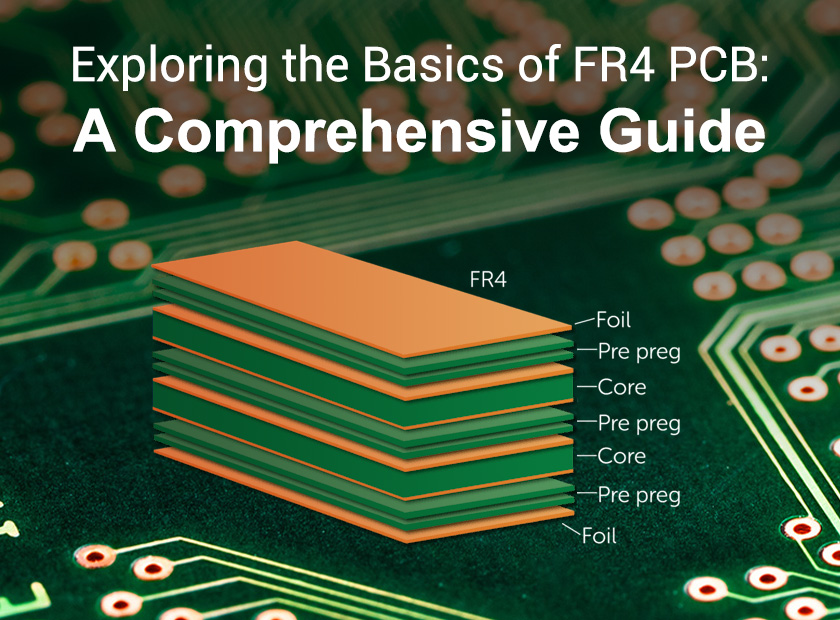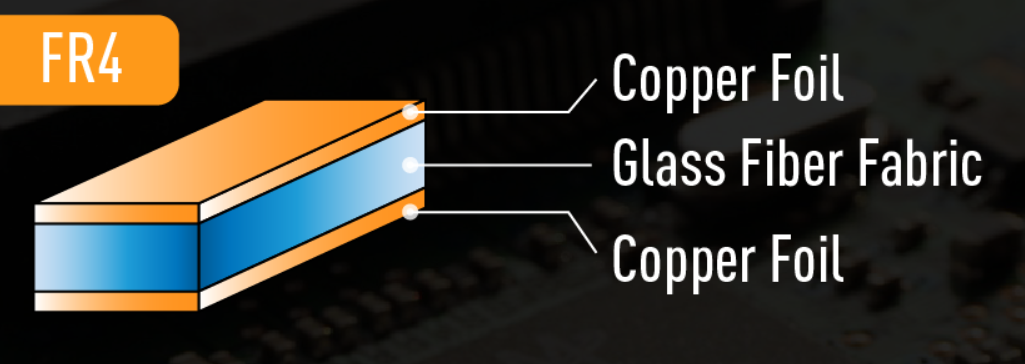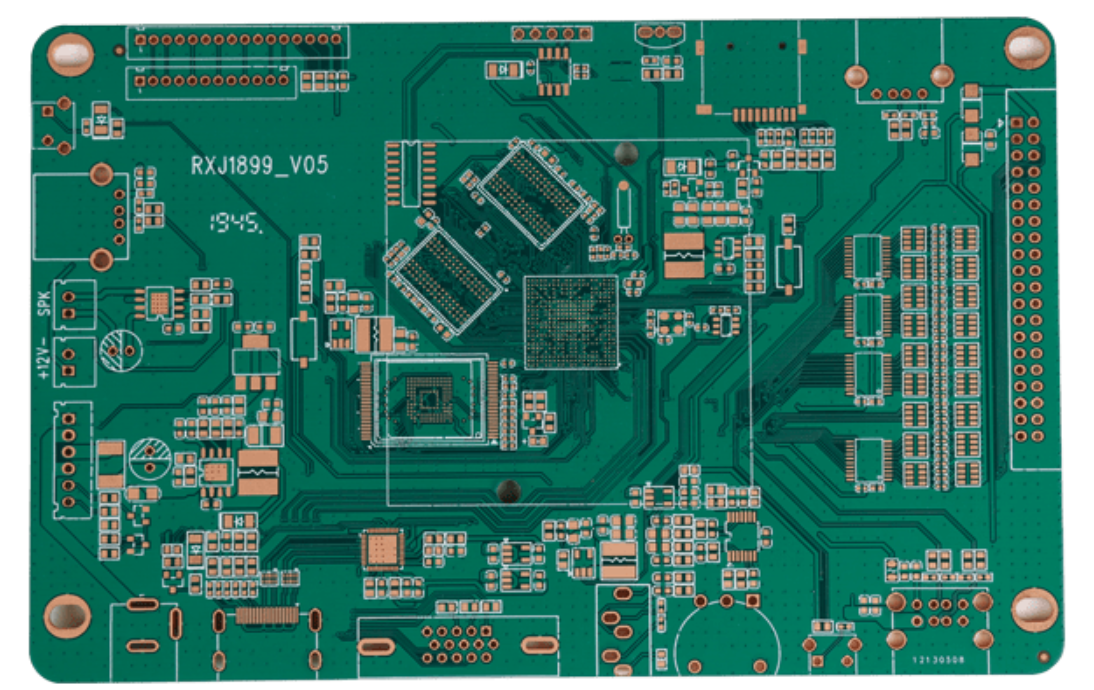Exploring the Basics of FR4 PCB: A Comprehensive Guide

Exploring the Basics of FR4 PCB: A Comprehensive Guide
Prologue
Printed Circuit Boards (PCBs) are the backbone of modern electronic devices, enabling the seamless integration of components and facilitating their functionality. Among the various types of PCB materials available, FR4 is widely recognized for its versatility and reliability. In this comprehensive guide, we will explore the basics of FR4 PCBs, including their definition, characteristics, manufacturing process, and key considerations.
What is FR4 PCB?
FR4 PCBs, also known as flame-retardant FR-4 glass epoxy laminates, are widely used in the manufacturing of printed circuit boards (PCBs). FR4 is a NEMA grade designation that refers to a specific type of composite material consisting of woven glass fiber fabric reinforced with an epoxy resin binder.
The designation "FR" in FR4 stands for "flame retardant," indicating that the material is self-extinguishing and resistant to flames. However, it's important to note that this designation alone does not guarantee compliance with the UL94V-0 standard unless the material undergoes testing according to the UL 94 standard, specifically the Vertical Flame testing in Section 8, at a compliant laboratory. The NEMA introduced the FR-4 designation in 1968.
FR4 PCBs are very popular and versatile high-pressure thermoset plastic laminate grades that offer a favorable strength-to-weight ratio. One of its most notable properties is its near-zero water absorption. As an electrical insulator, FR4 has significant mechanical strength. It retains its high mechanical and electrical insulation properties in both dry and wet conditions. These properties, combined with its favorable processing characteristics, make FR4 suitable for a wide range of electrical and mechanical applications.
Other grade designations for glass epoxy laminates include G-10, G-11, FR-5, and FR-6. However, FR-4 is the most widely used grade today. In the context of PCB manufacturing, FR4 specifically refers to the flame-retardant version of the glass-reinforced epoxy laminate material. It consists of a woven fiberglass cloth reinforced with epoxy resin. The incorporation of glass fibers and epoxy resin provides FR4 PCBs with exceptional electrical insulation, mechanical strength, and flame-retardant properties.
How Is FR4 Used in PCBs?
FR-4 plays a vital role in the construction of printed circuit boards (PCBs) and PCBA services. It forms the core material of the PCB, providing a sturdy base for the lamination of copper foil layers. Manufacturers of FR-4 PCB boards employ heat and adhesives to achieve this lamination process.
During the manufacturing process of FR4 PCBs, the FR-4 boards undergo lamination with copper layers at a carefully controlled temperature. This step ensures the proper integration of the copper layers onto the FR-4 substrate, forming the conductive pathways necessary for the functioning of the PCB.
FR-4 is well-suited for insulation purposes in PCBs, and it also serves as a reliable support material for the boards, even without the presence of laminated copper. Additionally, FR-4 possesses a higher glass transition temperature (TG) of approximately 180 °C. This elevated TG value indicates the temperature at which the material transitions from a rigid to a more flexible state, further enhancing the overall durability and stability of the PCB.
Types of FR4 PCB
Single-sided FR4 PCB: Single-sided FR4 PCBs consist of epoxy PCB resin with copper foil on one side, and components are glued to that side. They typically have a length of 100mm, width of 70mm, and height of 1.5mm. Despite advancements in production technologies, which have made them more expensive, single-sided PCBs remain an affordable and advanced option.
Double-sided FR4 PCB: Double-sided FR4 PCBs also feature epoxy PCB with copper foil on one side, but components are glued on both sides, allowing for crossing paths and increased conductivity.
Multilayer FR4 PCB: Multilayer FR4 PCBs have more than two layers and contain three layers of conductive material. The core material is laminated under high pressure and temperature, and components are glued to both sides, creating a complex network of pathways.
Rigid FR4 PCB: Rigid FR4 PCBs exclusively use FR4 material, making them rigid throughout the entire board and free from impurities.
Rigid-flexible FR4 PCB: Rigid-flexible FR4 PCBs combine rigid and flexible materials, resulting in a board that offers both rigidity and flexibility. The perimeter uses flexible material for bending, while thin boards enhance flexibility and heat resistance. During soldering, they can be bent to achieve desired angles.
What are the Advantages of FR4 PCB?
Electrical Insulation: FR4 PCBs possess excellent electrical insulation properties due to their high dielectric strength. The high dielectric strength of FR4 material ensures effective insulation, allowing it to withstand high voltage levels without electrical breakdown. This characteristic makes FR4 an ideal choice for applications where reliable electrical insulation is crucial.
Mechanical Strength: The glass reinforcement in FR4 PCBs imparts exceptional mechanical strength, making them resistant to bending, impacts, and vibrations.
Flame Retardancy: FR4 materials are inherently flame-retardant, which enhances the safety of electronic devices.
Thermal Stability: FR4 PCBs can withstand elevated temperatures during soldering and operation without significant degradation.
Low Cost: FR4 is an economically advantageous material due to its low cost.
Lightweight: FR4 boasts a high strength-to-weight ratio, making it lightweight and favorable for various applications.
Moisture-resistant: The moisture resistance of FR4, combined with its relative temperature resistance, enables it to excel in marine PCB applications. It does not absorb water, further contributing to its suitability in such environments.
Why is FR4 in high demand in the market:
FR4 is experiencing a surge in market demand due to several factors:
- Compact and easy to design: FR4 is known for its compactness and ease of design, making it a preferred choice for various applications. Its versatility allows for efficient integration into various electronic devices and systems.
- Strongest Plastic Fastening Materials: Among plastic fastening materials, FR4 stands out as one of the strongest options available. Its robustness and durability make it suitable for applications where mechanical strength is crucial.
- Cost-effective with many features: FR4 offers a compelling combination of affordability and functionality. Despite its low cost, it offers many beneficial features that make it an attractive option for manufacturers and designers looking for cost-effective solutions.
- Moisture resistance and high mechanical strength: FR4 has excellent moisture resistance, which increases its mechanical strength. This feature is particularly beneficial in high-humidity environments, ensuring reliable performance and durability.
- Good Insulation in Dry or Humid Environments: FR4 serves as an effective insulator in both dry and humid environments. Its insulating properties contribute to the overall stability and safety of electronic systems, protecting them from electrical shorts and potential damage.

Originally used primarily as an insulating material for printed circuit boards, FR4 has evolved to be used as a conductive sheet by incorporating copper into its structure. This combination increases the material's strength and moisture absorption capabilities when applied to PCB sheets.
The maximum ambient temperature tolerance of FR4 typically ranges from 248 °F to 266 °F, depending on the specific brand and filler used.
The Key Steps of FR4 PCB Manufacturing
- Substrate Preparation: The FR4 substrate is prepared by stacking layers of fiberglass cloth and impregnating them with epoxy resin.
- Lamination: The prepared substrate is subjected to heat and pressure, which causes the resin to cure and bond the layers together.
- Drilling: Precise holes are drilled into the laminated FR4 substrate to accommodate component leads and facilitate interconnection.
- Copper plating: A thin layer of copper is applied to the surface of the FR4 substrate in a process called copper plating.
- Etching and plating: Unwanted copper is etched away, leaving the desired circuit pattern, which is then plated to improve conductivity.
- Solder Mask and Silkscreen Application: Solder mask and silkscreen layers are added to protect the copper traces and provide component labeling, respectively.
- Testing and Inspection: The manufactured FR4 PCBs undergo rigorous testing and inspection to ensure their functionality and quality.
Key Considerations for FR4 PCB Design:
- Layer Stackup: Determining the number of layers and their arrangement is critical to accommodate circuit complexity and optimize space.
- Trace Width and Spacing: Proper trace width and spacing must be considered to maintain signal integrity and prevent electrical interference.
- Component Placement: Strategic placement of components minimizes signal distortion, reduces noise, and facilitates efficient routing.
- Thermal Management: Adequate thermal vias, heat sinks, and thermal relief patterns should be incorporated to effectively manage heat dissipation.
- Design for manufacturability: Considering manufacturing constraints and guidelines during the design phase ensures a smoother manufacturing process.
When you shouldn’t use FR4 Material:
While FR4 material is widely used and versatile, there are certain situations where it may not be the optimal choice. It is advisable to avoid FR4 material under the following conditions:
- Excellent Temperature Resistance: If your product requires exceptional temperature resistance, FR4 may not be the most suitable option. FR4 materials are not recommended for use in environments with highly extreme temperatures as they may exhibit limitations in terms of thermal performance.
- High-Frequency Signals: For applications involving the transmission of accurate high-frequency signals, FR4 material may not be the ideal choice. It may struggle to maintain the required signal integrity and could introduce signal loss or distortion.
- Lead-Free Soldering: During reflow soldering, which involves subjecting components to high temperatures, FR4 material may face challenges. The temperature peaks reached during the soldering process can potentially be detrimental to the integrity of FR4, making it less suitable for lead-free soldering applications.
In such scenarios, alternative materials with specific properties tailored to the desired requirements, such as high-temperature substrates or materials with superior signal characteristics, should be considered.
Final words
FR4 PCBs are crucial for electronic devices, providing connectivity and reliability. Understanding their characteristics, manufacturing processes, and design considerations empowers enthusiasts to create superior electronic systems. Elecrow offers trusted PCBA and PCB services, including precise component assembly and high-quality manufacturing. With a focus on customer satisfaction, Elecrow delivers prompt, cost-effective solutions for hobbyists and businesses.
If you are a maker interested in turning your ideas into realistic products and profiting from them, you can even join Elecrow's Partner Seller Program to fulfill it, join our Partner Seller Program to mass produce your ideas into solid projects, sell them online with our professional help and earn your profits here!



